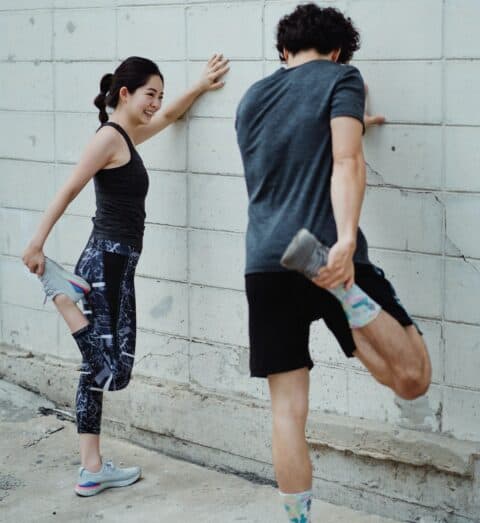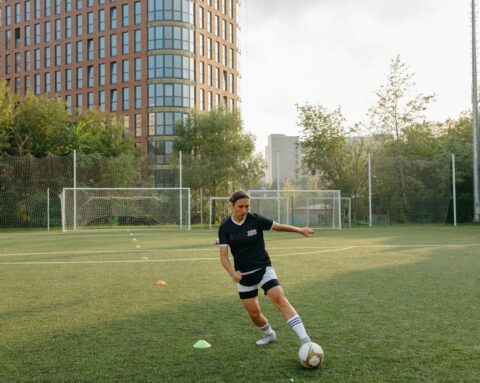Your lateral collateral ligament (LCL) is a cord-like ligament on your knee’s outer side. It is one of four major ligaments that help you to stabilise the knee joint. Despite being the least talked about of the ligaments that stabilise the knee it is very important in your day-to-day life. Stay tuned to find out everything you could possibly need to know about the LCL.
Lateral Collateral Ligament injuries are quite rare and only account for just 2% of all knee ligament injuries. A sprain is the most common form of LCL injury, it is common for lateral collateral injuries to occur at the same time as a PCL, ACL or other injuries that involve damage to the knee structures and ligaments
The main function of your lateral collateral ligament is to resist shin bone rotation and various forces. This usually occurs when your foot is pushed towards the knee or when your knee twists whilst your foot is on the ground. If the force is too high for the ligament to resist then it is likely for the LCL to become injured. This often occurs when there is a twist in the knee on a planted foot caused by a sudden change in direction.
There are 3 grades of LCL strain that can occur depending on the tearing or stretching of the knee ligament. If your sprain is mild your knee ligament should not tear but will have a slight stretch. There is a risk of repeat injury in this grade even if the knee doesn’t swell or hurt much.
When you experience a grade 2 LCL sprain you will have a partial tear in your knee ligaments. This is commonly accompanied by bruising and swelling along with pain. With this grade, you may experience instability within the knee.
The Grade 3 sprain is the most severe where your ligament has torn completely. When a Grade 3 sprain occurs you will have a large amount of swelling and the joint will be very unstable. It is not uncommon for your knee to give way often. When these sprains occur your other knee structures are in danger of injury. Your myotherapist will examine your knee to look for signs of ligament injury.
It is common to find swelling, pain and tenderness at the site of the ligaments through stress tests. An alternate way to diagnose the injury is through an MRI to look at the knee and surrounding structures. Your LCL injury treatment will vary depending on how severe your injury is as well as whether other structures are affected.
If you suffer a grade 1 sprain you can expect your LCL to heal within 3-6 weeks. After 6 weeks your fibres will have matured as long as you have been icing your injury and resting from painful activity.
Myotherapy is key as it will allow you to speed up the healing process through strengthening and joint exercises and massage. Not only will this make your recovery faster but it will also prevent the recurrence of the injury.
If your LCL injury is classified as a grade 2 you may find that some supportive taping or weight-bearing brace is required for early treatment. This is to avoid stretching the healing knee ligament and to ease the pain.
At this grade, healing will usually take a minimum of six weeks. Myotherapy can be very helpful to speed up the healing process through strengthening exercises and massage. It will also assist with preventing a future tear! Once the joint is stable and you no longer have pain you can return to activity.
If you suffer a grade 3 sprain your ligament will have torn completely which causes bleeding and swelling. Your joint may be unstable and unable to bear weight.
You may even experience severe pain but often times there will be no pain as all the pain fibres are torn at the time of injury. When a grade 3 tear occurs all your other nearby structures are at risk of injuries such as ACL or meniscus. Your myotherapist will aim to treat your LCL based on the severity of your injury as discussed previously.
Your treatments will aim to reduce inflammation, strengthen your lower limbs, reduce pain, normalise your range of motion, strengthen your knee, improve your proprioception, normalise your muscle lengths and improve your agility and function.
Depending on the grade of your injury you may start to feel better within just a few weeks! It is common for LCL injuries to respond well to conservative management techniques, however, in some cases, surgery may be required particularly if there is a disruption to the ligaments.
Particularly if the injury is a grade 3; there is a high chance of a combination of injuries involving the meniscus, ACL and posterolateral corner which will require surgery. 90% of patients have no complications post-surgery, however, the risks include pain, instability, infection, stiffness and difficulty in returning to your prior peak performance.
One of the most important factors of knee surgery is your post-operative knee rehabilitation. Your trained myotherapist will be able to guide you through the process for the best possible results!
Your recovery will mostly focus on restoring your power, endurance and a full range of knee motion. However, it is also important to improve your proprioception, agility, balance and other factors that influence your sport of choice!
To reduce your chance of a knee ligament sprain in the future you should undergo agility, proprioceptive and knee strengthening training programs. If you return to your chosen sport or activity too early there is a very high risk of re-injury. make sure to discuss your return to sport with your surgeon and myotherapist.






